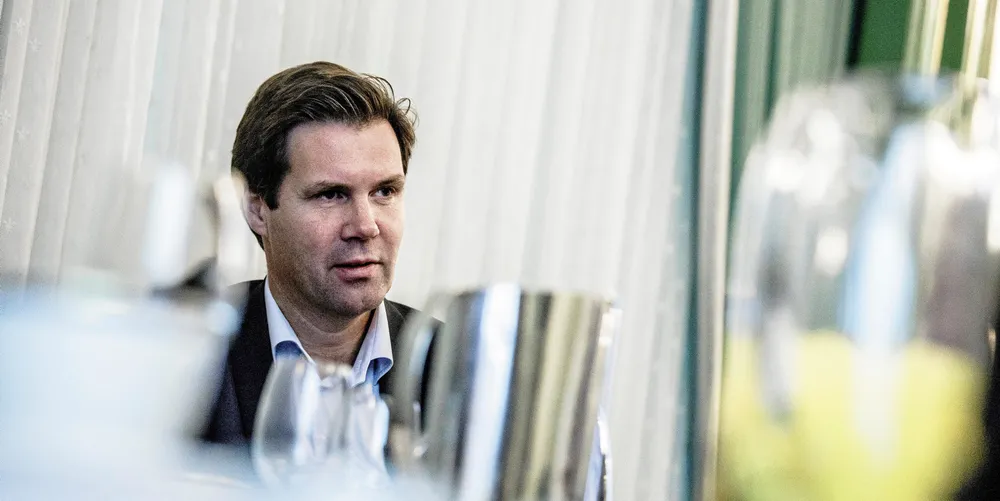Easing COVID restrictions, higher prices boost Leroy Seafood earnings
The group’s wild catch operations in particular saw earnings improve significantly in the quarter compared with a year ago.

Leroy Seafood Group saw its operating profit soar 92 percent in the second quarter of 2021, primarily due to achieving higher prices and improved productivity in its whitefish harvesting and processing operations.
The gradual easing of restrictions linked to the COVID-19 pandemic in a number of key markets also meant stronger demand and higher prices, said the group.
Leroy's revenue increased 12.5 percent in the quarter to NOK 5.3 billion (€506 million/$591.2 million).
Operating profit before fair value adjustment meanwhile reached NOK 583 million (€55.6 million/$65 million) in the second quarter, compared with NOK 303 million (€28.9 million/$33.8 million) in the same quarter of 2020.
Leroy Seafood Group CEO Henning Beltestad said retail demand continued to be strong in the second quarter, and the group began to see recovery in hospitality and catering segments as COVID-19-related restrictions eased.
Whitefish operations turn around
Leroy Havfisk -- the whitefish arm of the group -- contributed earnings before interest and taxes (EBIT) of NOK 65 million (€6.2 million/$7.2 million) in the second quarter, compared with a loss of NOK 5 million (€477,029/$557,319) in the same period in 2020.
The catch volume reached 16,345 metric tons in the second quarter, lower than the 19,708 metric tons caught in the same period of 2020, but a change in catch composition led to higher-value product.
The company prioritized shrimp and haddock harvests in the second quarter, while catches of redfish were significantly down on the same period in 2020.
Havfisk has opted to leave a higher share of the cod quota for the second half of the year compared with 2020.
Compared with the second quarter of 2020, prices for cod, the company's most important species, were down 12 percent, while prices for haddock and saithe were up 3 percent and 13 percent, respectively.
Current expectations are that further easing of the COVID-19-related restrictions could result in a positive price development for the remainder of 2021, including for cod, said the group.
“Earnings in the wild catch segment have improved significantly in the second quarter compared with 2020,” said Beltestad.
“Several factors have played a part in this, but it's very encouraging that the underlying improvements in land-based operations are gradually delivering increased earnings in this part of the business,” he said.
Salmon farming impacted by winter wounds
Operating profit for Leroy's farming segment were up 80 percent to NOK 388 million (€37 million/$43.2 million) in the second quarter of 2021, compared with NOK 216 million (€20.6 million/$24.1 million) last year.
A total of 37,000 metric tons was harvested during the quarter, compared with 39,000 metric tons in the second quarter of 2020.
Leroy’s Farming segment are made up of three farming regions in Norway: Leroy Aurora located in the Troms and Finnmark regions, Leroy Midt in Nordmore and Trondelag, and Leroy Sjotroll, located in Vestland.
In the second quarter of 2021, EBIT/kg -- a key indicator of profitability for salmon farmers -- was NOK 8.70 (€0.83/$0.97) for Leroy Aurora, NOK 13.70 (€1.30/$1.50) for Leroy Midt and NOK 8.30 (€0.79/$0.93) for Leroy Sjotroll.
On average, EBIT/kg across the group's salmon farming operations was up from NOK 5.5 (€0.52/$0.61) in the second quarter of 2020 to NOK 10.6 (€1/$1.20) in the second quarter of 2021.
While costs per kilo were down, Leroy said higher prices were the driving factor in the improvements. Those prices came despite the group's struggles with "winter sores," which impact the quality of the fish, and increase downgrades.
Beltestad said addressing the winter sore issue was "an obvious top-priority area of improvement for us."
Leroy's fully-owned farms are on track to harvest around 192,000 metric tons this year -- a substantial increase over the last two years, up from 158,000 metric tons in 2019,” said Beltestad.
Including affiliates, the group anticipated harvests of between 205,000-210,000 metric tons for the year.
Investments in VAP division paying off
Operating profit in the division reached NOK 161 million (€15.4 million/$17.9 million), up 41 percent from NOK 114 million (€10.9 million/$12.7 million) in the same period in 2020.
(Copyright)